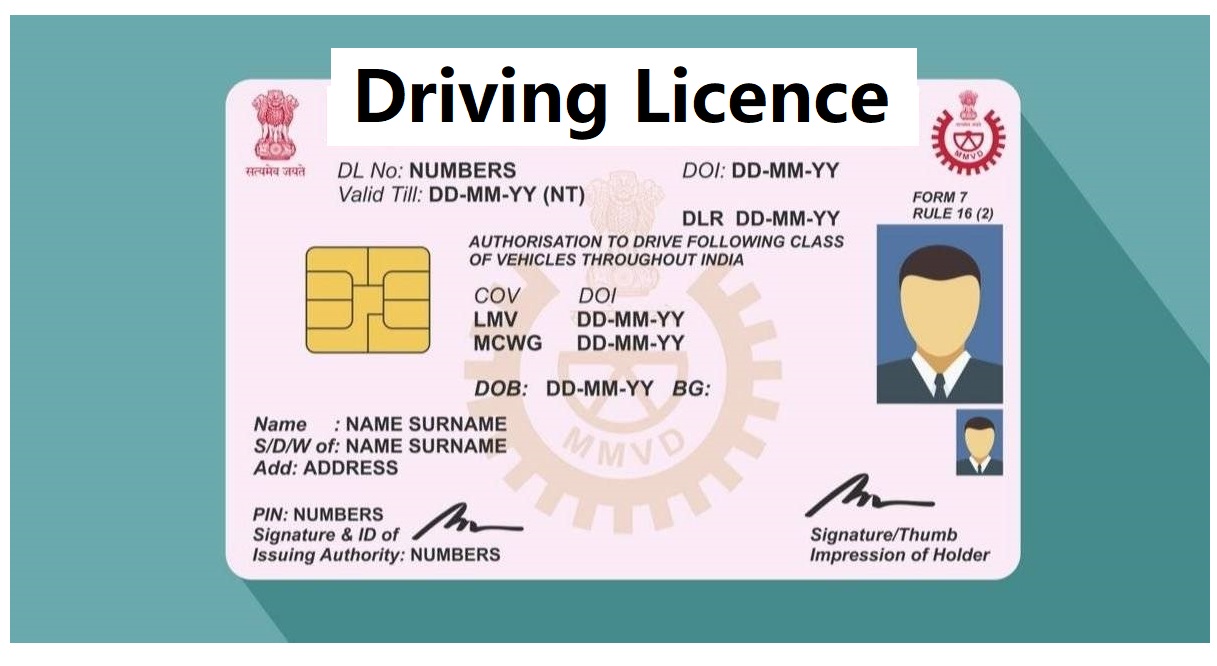A driving licence is an official document issued by the Regional Transport Office (RTO) in India that authorizes individuals to operate motor vehicles on public roads. It serves as proof of the holder’s ability to drive and is essential for ensuring road safety. This article provides a comprehensive step-by-step guide on what a driving licence is, why it is necessary, and how to obtain one, including the required documents.
- Understanding a Driving Licence:
A driving licence is a legal document that permits individuals to drive various types of motor vehicles on Indian roads. It is classified into two categories: Learner’s Licence (LL) and Permanent Driving Licence (DL). The LL is a provisional licence that allows individuals to learn to drive under certain restrictions, while the DL is a full-fledged licence for driving without limitations. - Importance of a Driving Licence in India:
a. Legally Mandated: As per the Motor Vehicles Act, 1988, possessing a valid driving licence is mandatory for operating a motor vehicle on public roads in India. Driving without a licence can result in penalties, fines, and legal consequences.
b. Proof of Competence: A driving licence serves as proof that the holder has undergone the necessary training, passed the required tests, and possesses the skills and knowledge to drive safely.
c. Identification: A driving licence also acts as a valid form of identification accepted by various government and private entities.
d. Insurance Coverage: Insurance companies typically require a valid driving licence when issuing vehicle insurance policies. Driving without a licence may lead to denial of insurance claims in case of accidents. - How to Obtain a Driving Licence:
a. Learner’s Licence (LL):
i. Eligibility: Individuals must be at least 16 years old for two-wheelers up to 50cc and at least 18 years old for other vehicles.
ii. Application Form: Obtain the Learner’s Licence application form (Form 2) either from the local RTO office or download it from the official website.
iii. Required Documents: Submit the following documents along with the completed application form: proof of age (birth certificate, school leaving certificate, etc.), proof of address (passport, voter ID, utility bills, etc.), passport-size photographs, and applicable fees.
iv. Written Test: Visit the nearest RTO office to take the written learner’s licence test, which assesses knowledge of traffic rules, signs, and regulations.
v. Learner’s Licence Issuance: Upon passing the test, the learner’s licence will be issued on the same day or sent by post.
b. Permanent Driving Licence (DL):
i. Eligibility: Hold a valid Learner’s Licence and wait for at least 30 days before applying for a Permanent Driving Licence.
ii. Application Form: Obtain the Permanent Driving Licence application form (Form 4) from the RTO office or download it from the official website.
iii. Required Documents: Submit the following documents along with the completed application form: valid Learner’s Licence, proof of age and address (as mentioned earlier), passport-size photographs, and applicable fees.
iv. Driving Test: Schedule a driving test at the RTO office. Bring a vehicle of the appropriate category for which you are applying.
v. DL Issuance: If you pass the driving test, your Permanent Driving Licence will be issued within a specific timeframe.
- Required Documents for Driving Licence Application:
a. Proof of Age: Birth certificate, school leaving certificate, passport, PAN card, or Aadhaar card.
b. Proof of Address: Passport, voter ID, Aadhaar card, utility bills, rent agreement
